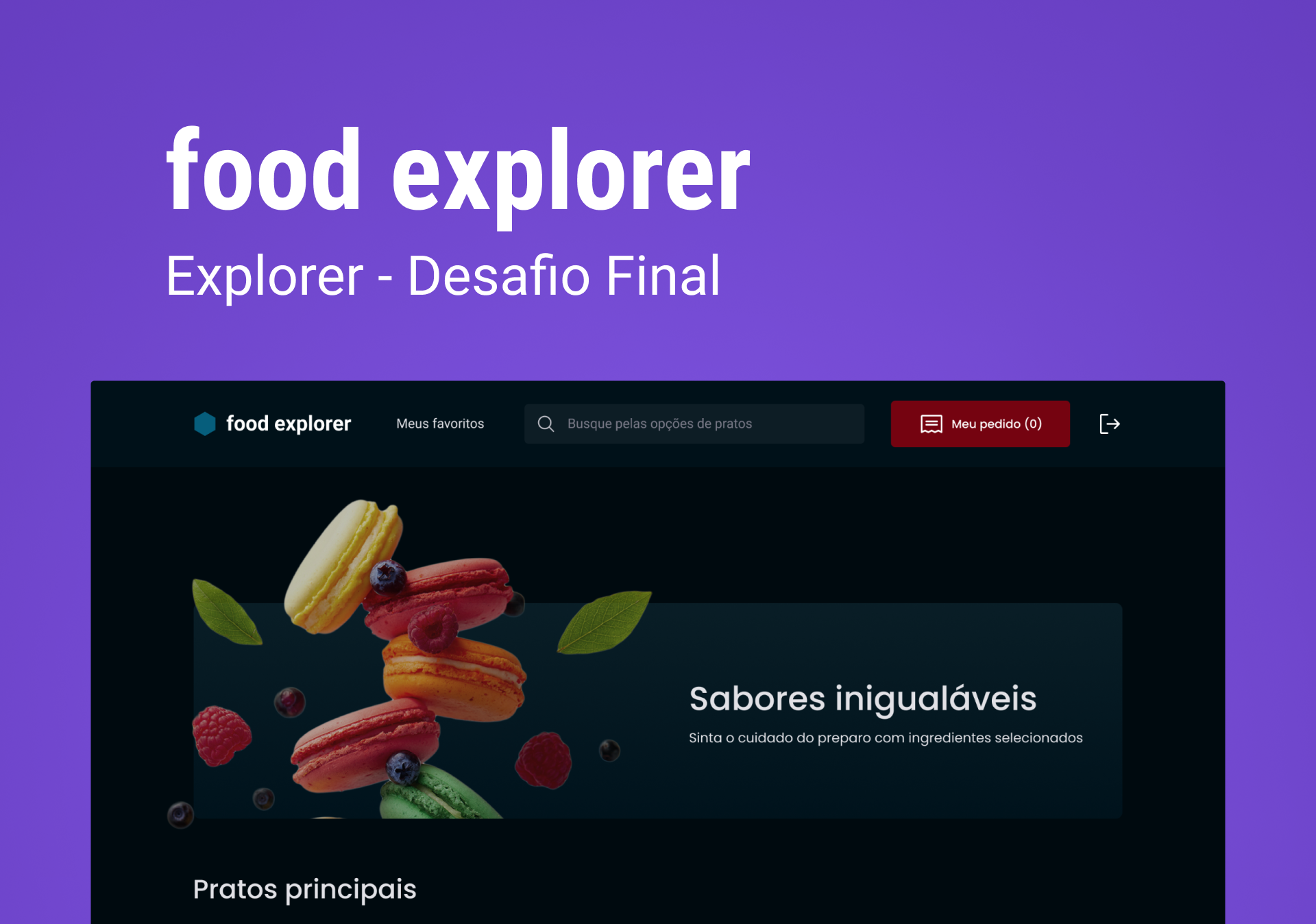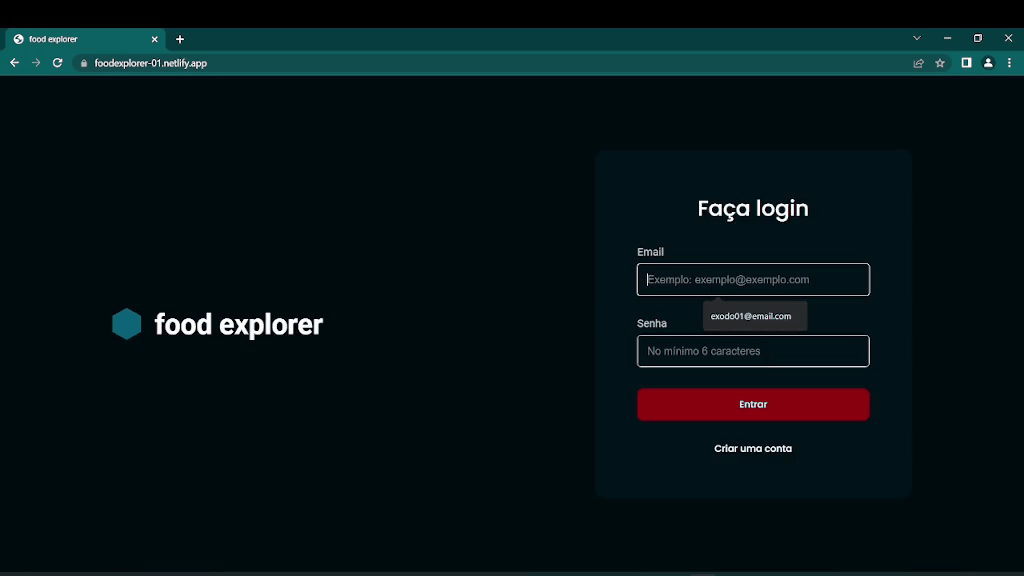About • Features • Layout • Tech Stack • Author • License
The application that we will develop is a digital menu for a fictional restaurant, known as foodExplorer. In this challenge, the following topics were addressed:
- React;
- Routes;
- components;
- Props;
- hooks;
- context;
- A structured project, with a good organization of folders, division of components in the front-end, etc.
- A README.md file with specifications on how to run the project in a dev environment.
- Users must authenticate themselves to enter the application through the login screen, you can apply what you learned in JWT authentication classes. Authentication must be validated with a password.
- The admin will upload images to register the dishes.
- Finally, deploy your application.
- Give your functions and variables meaningful names: work with Clean Code concepts a bit.
- The admin, restaurant and users data will be stored in a database.
- Possibility to search by dish name, ingredients or favorite dish
- It is essential that your interface consumes its own API.
- Interesting to make the application responsive: use the concept of Mobile First that was learned in class.
- It's up to you where to apply animations, transitions, and transformations.
- It meets the model proposed in Figma and contains elements indicative of action and state. opcionais
- The user can add items to the cart by clicking the add button. The amount is controlled by the “-” and “+” buttons;
- By clicking on the my order button, the user will be redirected to a screen where he will see his order, the sum and the payment methods;
- The user will be able to delete a dish from the cart and the total amount of the order should be updated automatically;
- The user can mark a dish as a favorite, just click on the heart that appears next to each one;
- The admin will view and control the status of each order, through a select field. Orders will appear in a table when you click Orders;
This project is divided into two parts:
- Backend (food-explorer-backend folder)
- Frontend (food-explorer-frontend folder)
💡 The Frontend needs the Backend to be running to work.
Before you begin, you will need to have the following tools installed on your machine: [Git] (https://git-scm.com), [Node.js] (https://nodejs.org/en/). In addition, it is good to have an editor to work with the code like [VSCode] (https://code.visualstudio.com/)
# Clone this repository
$ git clone [email protected]:exodogurgel/food-explorer-backend.git
# Access the project folder in your terminal
$ cd food-explorer-backend
# Install the dependencies
$ npm install
# run the migration and seed
$ npm migrate
$ npm seed
# Run the application in development mode
$ npm run dev
# Admin login
$ email: [email protected]
$ password: 090807
# The Server will start at port: 3333 - go to http://localhost:3333# Clone this repository
$ git clone [email protected]:exodogurgel/food-explorer-frontend.git
# Access the project folder in your terminal
$ cd food-explorer-frontend
# Install the dependencies
$ npm install
# Run the application in development mode
$ npm run dev
# The application will open on the port: 3000 - go to http://localhost:3000The following tools were used in the construction of the project:
The application that we will develop is a digital menu for a fictional restaurant, known as foodExplorer.

Êxodo Gurgel 🚀
This project is under the license MIT.
Made with ❤️ by Êxodo Gurgel 👋🏽 Get in Touch!














